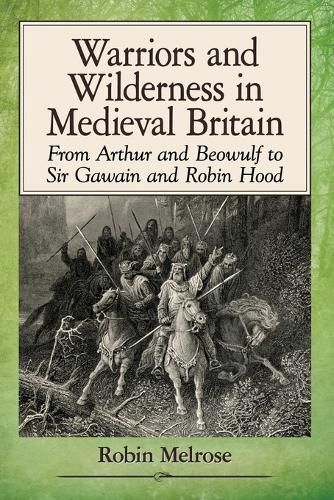Readings Newsletter
Become a Readings Member to make your shopping experience even easier.
Sign in or sign up for free!
You’re not far away from qualifying for FREE standard shipping within Australia
You’ve qualified for FREE standard shipping within Australia
The cart is loading…






This title is printed to order. This book may have been self-published. If so, we cannot guarantee the quality of the content. In the main most books will have gone through the editing process however some may not. We therefore suggest that you be aware of this before ordering this book. If in doubt check either the author or publisher’s details as we are unable to accept any returns unless they are faulty. Please contact us if you have any questions.
The story of King Arthur has fascinated generations of readers, and this book is a follow up to the author’s recently published British Religion from the Megaliths to Arthur. The new book explores how the story of Arthur evolved in England in the later Middle Ages, and depicts Arthur as a wilderness figure, the descendant of the northern Romano-British hunter/warrior god. The earliest Arthur was a warrior, but in the 11th century Welsh tale Culhwch and Olwen, he is less a warrior and more the leader of a band of heroes who live outside society. The story of Arthur was popularized by Geoffrey of Monmouth, in his Latin History of the Kings of Britain, and this was translated into Middle English in Layamon’s Brut and the later Alliterative Morte Arthure. Both of these owed much to the famous Anglo-Saxon Poem
Beowulf , which draws on the Anglo-Saxon fascination with the wilderness. The most famous Arthurian tale is Sir Gawain and the Green Knight, in which the wilderness and themes from Beowulf play a leading role. Three Arthurian tales set in Inglewood Forest, Cumbria, place Arthur and Gawain in a wilderness setting, and link Arthur to medieval Robin Hood tales.
$9.00 standard shipping within Australia
FREE standard shipping within Australia for orders over $100.00
Express & International shipping calculated at checkout
This title is printed to order. This book may have been self-published. If so, we cannot guarantee the quality of the content. In the main most books will have gone through the editing process however some may not. We therefore suggest that you be aware of this before ordering this book. If in doubt check either the author or publisher’s details as we are unable to accept any returns unless they are faulty. Please contact us if you have any questions.
The story of King Arthur has fascinated generations of readers, and this book is a follow up to the author’s recently published British Religion from the Megaliths to Arthur. The new book explores how the story of Arthur evolved in England in the later Middle Ages, and depicts Arthur as a wilderness figure, the descendant of the northern Romano-British hunter/warrior god. The earliest Arthur was a warrior, but in the 11th century Welsh tale Culhwch and Olwen, he is less a warrior and more the leader of a band of heroes who live outside society. The story of Arthur was popularized by Geoffrey of Monmouth, in his Latin History of the Kings of Britain, and this was translated into Middle English in Layamon’s Brut and the later Alliterative Morte Arthure. Both of these owed much to the famous Anglo-Saxon Poem
Beowulf , which draws on the Anglo-Saxon fascination with the wilderness. The most famous Arthurian tale is Sir Gawain and the Green Knight, in which the wilderness and themes from Beowulf play a leading role. Three Arthurian tales set in Inglewood Forest, Cumbria, place Arthur and Gawain in a wilderness setting, and link Arthur to medieval Robin Hood tales.